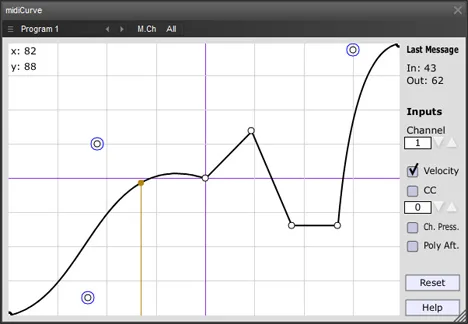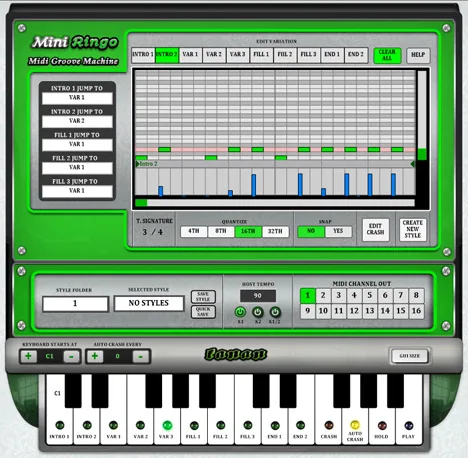Dear musicians, producers, and sound experimenters!
Ready to dive into a world of unpredictable, yet logically sound and mathematically precise MIDI patterns? We present Automathico – a unique MIDI note generator by SirSickSik, opening up new horizons for creating melodic and rhythmic structures in your music. It’s not just a sequencer; it’s a tool that uses the magic of mathematics to generate ever-changing, but cyclical musical ideas.
Automathico: Mathematical Magic for Your MIDI Ideas
At the heart of Automathico lies the concept of looped mathematical calculations that are transformed into MIDI messages. Forget about standard linear sequencers. This plugin is designed for those who seek fresh, dynamic, and non-trivial patterns that can evolve over time or with simple adjustments.
The plugin has an intuitive, though deep structure, consisting of several key components that work in synergy, creating captivating musical results.
Key Components and Functionality
Automathico is clearly divided into three main parts, each playing its role in the MIDI generation process:
- Knob-Automation Recorder: This compact section allows you to internally record the movements of the plugin’s knobs. This means you can automate parameter changes directly within Automathico, adding dynamics and development to your generated patterns without the need for external automation in the DAW.
- Rhythmic Section: Most of the interface is dedicated to rhythm control. It interacts closely with the melodic section, determining when and how generated pitch and velocity values will be assigned to note generators.
- Six Sequencers: This is the heart of Automathico, taking up most of the display. Knobs and selectors for six nearly identical sequencers are located here. Their functionality is diverse:
Two sequencers serve to form the basic base:
- One for stable enharmonics.
- The other for chords (with an offset from enharmonics, scaled to the desired scale and tonality).
The other four sequencers are divided into two separate pairs for controlling pitch and velocity:
- Two sequencers for generating pitch patterns.
- Two sequencers for generating velocity patterns.
This allows you to create two different patterns (melodic and dynamic), which can follow the same basic structure defined by enharmonics and chords.
Principles of Sequencer Operation
Each of these six sequencers is built on the principle of the “sample & hold” cycle, through which series of mathematical calculations pass. The sequence of value processing includes:
- Waveshaper: forming the value wave.
- Parabolic function: applying parabolic transformation.
- Math-algorithm: applying one of the functions, such as sine, hyperbolic tangent (tanh), power, square root, etc.
Each sequencer has its own clock-divider and sync-option, which allows you to easily create repeating patterns or synchronize them with the main tempo.
The “feed” option in the pitch and velocity sequencers is especially interesting. It allows you to feed values from one sequencer into the cycle of another, modulating it with mathematical functions. This opens up a multitude of possibilities for creating complex, interdependent, and organically developing patterns.
In addition, a separate LFO (low-frequency oscillator) is provided for each of the six sequencers, which can modulate one of its parameters. Different combinations of modulation can lead to very interesting and unexpected results, making patterns constantly change and evolve.
Interaction of Rhythm and Melody
The rhythmic and melodic sections work in concert to assign the current pitch and velocity values generated by the sequencers to the note generators in arp-mode. A special switch allows you to control this process:
When the switch is in the down position, the appropriate MIDI note generator is triggered depending on the range of values that the pitch sequencer generates (0-25%, 25-50%, 50-75%, 75-100%). Each of these generators can send MIDI messages to a separate MIDI channel.
This is an extremely powerful feature because it allows you to play different keyboard ranges (or different notes) using different external synthesizers or samplers (both VSTi and hardware), each on its own MIDI channel. Thus, one Automathico plugin can become the brain center for an entire setup, generating complex parts for several instruments simultaneously.
Dynamics and Control
This whole complex system allows you to create an extremely dynamic sequencer. You can instantly change the mood, rhythm, and melodic structure of your pattern by simply turning one knob. Of course, you need to know which knob is responsible for what, but the potential for experimentation here is huge.
Automathico is ideal for controlling both software VSTi instruments in your DAW and external hardware synthesizers or samplers if your MIDI host (e.g., Cubase or Fruity Loops, known for their MIDI routing capabilities) supports the appropriate sending of MIDI messages.
If you are tired of typical MIDI sequencers and are looking for a tool that will stimulate your creativity by generating unique, logical, and unpredictable patterns based on mathematical principles, Automathico is exactly what you need. Try it and let mathematics create music for you!
This plugin is available in VST format for the Windows operating system (32-bit).
Discover the power of mathematics in music with Automathico!



